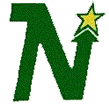

The key players behind Minnesota's effort were Walter Bush Jr., a
lawyer who co-owned Minnesota's Central league team, Minneapolis
Bruins; Gordon Ritz, a former Yale hockey player who made his money
in the construction business and
Bob McNulty, a popular broadcasting personality. Bush lured in
additional investers from both Minneapolis and St. Paul to form a
eight man team.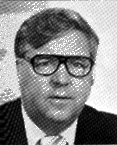
With fierce competition from other bidding cities, including a rival bid from their home state, Bush and his team set out to convince the NHL's Board of Governors to hand over one of the six expansion franchises. Despite the fact that the Twin Cites owned the smallest sized television market among the major applicants, the NHL must of felt that they couldn't pass up on a community so rich in hockey tradition. On February 9th, 1966 they officially granted Minnesota an expansion team scheduled to begin play in the fall of 1967. Eventually, five cities St. Louis, Los Angeles, Philadelphia, Pittsburgh and Oakland were also welcomed into the NHL.
Where to house the club was the big question. The largest arena at the time was the St. Paul Auditorium, but it seated only 8,500 which was well short of the 12,500 capacity that the league demanded. Building a new state of the art arena was the only option and Bush's deal with the NHL strictly depended on it.
Talks began with the Metropolitan Stadium Commission on premise that an arena strategically placed between Minneapolis and St. Paul in the suburb of Bloomington , where the Twins and Vikings had already been successful, would be ideal for hockey as well.
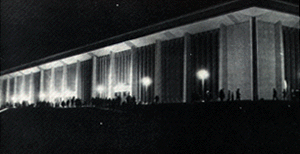 The commission was sold
on the idea and agreed to the construction of the building, which
would later be named Metropolitan Sports Center.
The commission was sold
on the idea and agreed to the construction of the building, which
would later be named Metropolitan Sports Center.
Not long after the announcement, a season ticket drive got things started. Two groups of businessmen, one from St. Paul and one from Minneapolis held a contest of sort to see which city would sell the most tickets. Nearly 6,000 season tickets were sold before it would end. Another contest was conducted to determine what the new team should be called. Among the suggested names were the Blades, Norsemen, Muskies, Lumberjacks, Mallards, Muskies, Puckaroos and the Voyageurs. The winning name of course, "The North Stars", came from the State's nickname, the North Star State.
While the contests were in progress, Wren Blair was hired as the new team's coach and general manager. Blair or "Bird", as he was called, had come from the Bruins organization and had once served as coach and GM of the Minneapolis Bruins in the CPHL. He been a very successful in Junior hockey and at the Minor pro level, but Blair was probaly most recognized for being the man who discovered Bobby Orr.
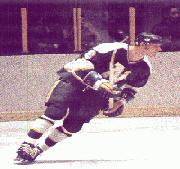 On June 6th, 1967 a first of a
kind expansion draft was held. The new teams could select players
from the rosters of the established clubs. Each established club was
allowed to protect eleven skaters and one goalie.
On June 6th, 1967 a first of a
kind expansion draft was held. The new teams could select players
from the rosters of the established clubs. Each established club was
allowed to protect eleven skaters and one goalie.
The goaltender round was conducted first and Wren decided to go with Cesare Maniago who played in the New York organization and was known by locals from his stay with the St. Paul Rangers in the CPHL. Wren's building strategy was defense, but he would later discover that his team's offense was a strength. Players like Wayne Connely, Dave Balon, and young man named Bill Goldsworthy would prove to be solid big league scorers.
Workers were still putting seats into the new building on the day of the October 21st home opener. Nearly 13,000 fans were on hand along with NHL president, Clarence Campbell, to witness the Stars first ever game at Met Center as they hosted the Oakland Seals. Bill Goldsworthy opened the scoring and the two teams skated to a 3-3 tie.
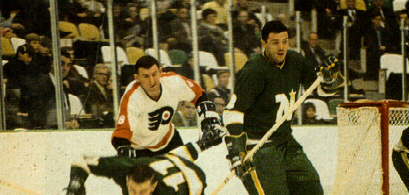 The quality of play from new
team did not disappoint the fans. Blair's biggest concern was his
defense, but Maniago was sharp. So sharp in fact that for a time in
mid December Maniago pulled off a remarkable record when he went 188
minutes and 38 seconds without a goal against. At the season's
midway point the Stars were in a close race with Philadelphia and Los
Angeles for first place in the Western Division.
The quality of play from new
team did not disappoint the fans. Blair's biggest concern was his
defense, but Maniago was sharp. So sharp in fact that for a time in
mid December Maniago pulled off a remarkable record when he went 188
minutes and 38 seconds without a goal against. At the season's
midway point the Stars were in a close race with Philadelphia and Los
Angeles for first place in the Western Division.
Tragedy struck on January 13th in a game against the Seals. Center Bill Masterton was checked and fell awkwardly, striking his head hard against ice. Two days later Bill died of his head injuries. The team was on the road in Montreal when they got the news. The death of their teammate no doubt shook up the squad. They lost six straight games.
The North Stars finished the season in a solid fourth place. One point behind St. Louis.
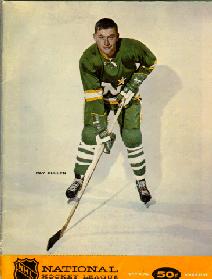
Final Standings 1967-68
West Division
W L T GF GA Pts
Philadelphia 31 32 11 173 179 73
Los Angeles 31 33 10 200 224 72
St. Louis 27 31 16 177 191 70
Minnesota 27 32 15 191 226 69
Pittsburgh 27 34 13 195 216 67
Oakland 15 42 17 153 219 47
East Division
W L T GF GA Pts
Montreal 42 22 10 236 167 94
New York 39 23 12 226 183 90
Boston 37 27 10 259 216 84
Chicago 32 26 16 212 222 80
Toronto 33 31 10 209 176 76
Detroit 27 35 12 245 257 66
The first round of the playoffs matched the Stars against the Terry Sawchuk and Los Angeles Kings in a best of seven series. The Kings took the first two games and then took a 3-2 lead, but the North Stars rallied and evened the series with Milan Marcetta's overtime goal in game six. They won again in game seven by scoring a club record nine goals.
 A Showdown in the West
A Showdown in the West
Fresh from the victory against the Kings the Stars next faced the St. Louis Blues to determine who would play in the Cup Finals. The North Stars took the initiative by winning two of the first three games. The fourth game was a disappointment. Minnesota led 3-0 midway in the third before Jim Roberts and Dickie Moore scored a minute apart. Then with only eleven seconds left, Roberts scored again to tie and force the contest into overtime. Gary Sabourin scored in the second minute of O.T. to win it for the Blues.
The Stars lost the next game in overtime, but their frustrations were relieved when they crushed the Blues in Game Six, 5-1. Their success up to this point came despite that fact that they were forced to play four of the six games on the road because the Ice Follies had been booked at the Met Center. Now the Stars had to travel back to St. Louis one last time for Game Seven.
The final game was a classic. Ceasar Maniago played superb in goal, but St. Louis' Glenn Hall was equal to the task. With only four minutes remaining the Star's Walt McKechnie scored the first goal of the game and it looked like Minnesota would advance to the finals. However, less than one minute later the vetern Moore scored to force the game into yet another extra period.
The first overtime was scoreless. Three minutes had passed into the second overtime before the Blues' Ron Schock drilled one past Maniago to win it and end a truly physically and emotionally draining series for both teams.
The Blues would then go on to lose to Montreal in four games in the finals. Many blamed their quick exit on the fact that they were drained from the Minnesota series. When it was over, Bill Goldsworthy stood atop the playoff leader board with eight goals and seven assists.
Among fans, players and coaches there were few who could deny that this season had been a success. Everyone looked forward with much enthusiasm to the seasons ahead.